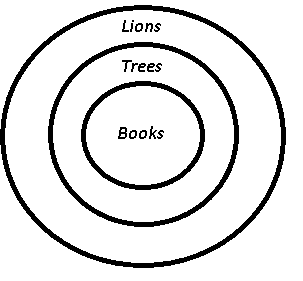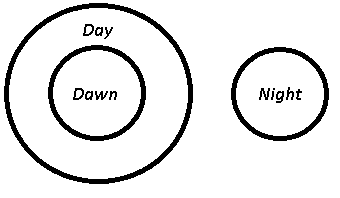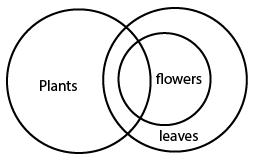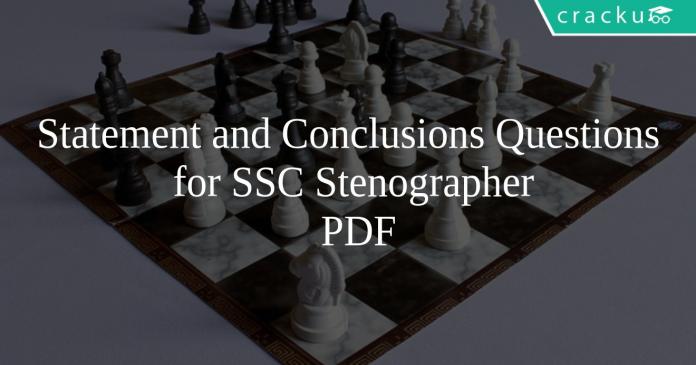Statement and Conclusions Questions for SSC Stenographer PDF
SSC Stenographer Statement and Conclusions Questions and Answers download PDF based on previous year question papers of SSC exam. 20 Very important Statement and Conclusions Questions for Stenographer.
Download Statement and Conclusions Questions for SSC Stenographer PDF
10 Stenographer Mock Tests – Just Rs. 117
Download All Important SSC Stenographer Questions PDF (Topic-Wise)
SSC Stenographer Free Mock Test (Latest Pattern)
SSC Stenographer Previous Papers
Question 1: Consider the given statement/s to be true and decide which of the given conclusions/assumptions can definitely be drawn from the given statement.
Statement:
Irregularity is a cause for failure in exams.
Some regular students fail in the examinations.
Conclusions:
I. All failed students are regular.
II. All successful students are not regular.
a) Only conclusion I follows
b) Only conclusion II follows
c) Both conclusion I and conclusion II follow
d) Neither conclusion I nor conclusion II follows
Question 2: Consider the given statement/s to be true and decide which of the given conclusions/assumptions can definitely be drawn from the given statement.
Statements:
All fruits are leaves.
Some fruits are grapes.
Conclusion: I: Some leaves are grapes.
Conclusion II: All grapes are fruits.
a) Only conclusion I follows
b) Only Conclusion II follows
c) Both conclusion I and II follows
d) Neither Conclusion I nor II follows
Question 3: A is taller than B. C is taller than A. D is taller than E but shorter than B. Who is the tallest?
a) C
b) A
c) D
d) B
Question 4: Consider the given statement/s to be true and decide which of the given conclusions/assumptions can definitely be drawn from the given statement.
Statements:
a) Odisha is still an underdeveloped state.
b) Problems like poverty, unemployment and illiteracy have not been solved.
Conclusions:
I) The administration of Orissa is not sensitive enough.II) It is the Will of God.
a) Only I follows
b) Only II follows
c) Both I and II follow
d) Neither I and II follows
Question 5: Consider the given statement/s to be true and decide which of the given conclusions/assumptions can definitely be drawn from the given statement.
Statement: Poverty is a symptom as well as a consequence of social disorder.
Assumptions:
I. Poverty is a type of social order
II. Poverty is related to social order
a) only I assumption is correct
b) only assumption II is correct
c) Both assumptions I and II are correct
d) Neither assumption I nor II is correct
Download SSC Stenographer Syllabus PDF
Question 6: Consider the given statement/s to be true and decide which of the given conclusions/assumptions can definitely be drawn from the given statement.
Statement:
1. All states having dams face no water problem.
2. One of the states has no dam.
Conclusions:
I. It may be facing water problem.
II. Dams solve water problem.
a) Only conclusion I follows
b) Only conclusion II follows
c) Both conclusion I and conclusion II follow
d) Neither conclusion I nor conclusion II follows
Question 7: Consider the given statement/s to be true and decide which of the given conclusions/assumptions can definitely be drawn from the given statement.
Statements:
1. All books are trees.
2. All trees are lions.
Conclusions:
I. All books are lions.
II. All lions are books.
III. All trees are books
IV. Some lions are books.
a) Only conclusions I and III follow
b) Only conclusions I and IV follow
c) None of the conclusions follow
d) All conclusions follow
FREE SSC MATERIAL – 18000 FREE QUESTIONS
Question 8: One or two statements are given followed by two or more conclusions/assumptions, I, II, III, IV. You have to consider the statement to be true, even if it seems to be at variance from commonly known facts. You are to decide which of the given conclusions/assumptions can definitely be drawn from the given statement: 1. All goats are tigers.
Statement: 2. All tigers are lions.
Conclusion:
I. All tigers are goats.
II. All lions are tigers.
III. No goat is a lion.
IV. No lion is a goat.
a) Only Conclusion III & IV follow
b) Only Conclusion I & II follow
c) None of the Conclusions follows
d) All Conclusions follow
Question 9: In the question two statements are given, followed by two conclusions, I and II. You have to consider the statements to be true even if it seems to be at variance from commonly known facts. You have to decide which of the given conclusions, if any, follows from the given statements.
Statement 1 : All dawn is day.
Statement 2 : No day is night.
Conclusion I : No night is day.
Conclusion II : Some dawn is night.
a) Only conclusion I follows
b) Only conclusion II follows
c) Both I and II follow
d) Neither I nor II follows
Question 10: Consider the given statement/s to be true and decide which of the given conclusions/assumptions can definitely be drawn from the given statement.
Statement 1: When water is cooled, it turns into ice.
Statement 2: When water is heated, it turns into steam.
Conclusion I: Water is a solid.
Conclusion II: Water is a gas.
a) Only Conclusion I follows
b) Only Conclusion II follows
c) Both I and II follow
d) Neither I nor II follows
Question 11: If ‘+’ means subtraction, ‘÷’ means addition, ‘<‘ means multiplication and ‘>’ means division, then find the value of the given statement, The value of 9 ÷ 7 < 8 > (4>2) + 5 will be
a) 32
b) 18
c) 16
d) 11
Question 12: P, Q, R and S are four friends. P is shorter than Q but taller than R who is shorter than S. Who is the shortest among all?
a) P
b) Q
c) R
d) S
Question 13: Consider the given statement/s to be true and decide which of the given conclusions/assumptions can definitely be drawn from the given statement.
Statement: If he works hard he will be successful in life.
Conclusions: I. He is a hard worker.
Conclusions: II. Hard work pays
a) Both I and II follow
b) Only I follows
c) Only II follows
d) Neither I nor II follow
Question 14: In the question two statements are given, followed by two conclusions, I and II. You have to consider the statements to be true even if it seems to be at variance from commonly known facts. You have to decide which of the given conclusions, if any, follows from the given statements.
Statement 1 : All flowers are leaves.
Statement 2 : Some flowers are plants.
Conclusion I : Some leaves are plants.
Conclusion II : Some plants are flowers.
a) Only conclusion I follows
b) Only conclusion II follows
c) Both I and II follow
d) Neither I nor II follows
SSC STENOGRAPHER PREVIOUS PAPERS
Question 15: In the question two statements are given, followed by two conclusions, I and II. You have to consider the statements to be true even if it seems to be at variance from commonly known facts. You have to decide which of the given conclusions, if any, follows from the given statements.
Statement 1 : No shirts are t-shirts.
Statement 2 : All t-shirts are cotton.
Conclusion I : Some shirts are cotton.
Conclusion II : No t-shirts are shirts.
a) Only conclusion I follows
b) Only conclusion II follows
c) Both I and II follow
d) Neither I nor II follows
Stenographer Expected Cut off 2018-19
SSC Stenographer Salary after 7th Pay Commission
Answers & Solutions:
1) Answer (D)
The given statement clearly implies that all irregular and some regular students fail in the examinations. This, in turn, means that all successful students are regular but not all regular students are successful.
Thus, neither I nor II follows.
=> Ans – (D)
2) Answer (A)
The venn diagram for above statements is :

Conclusion: I: Some leaves are grapes = true
Conclusion II: All grapes are fruits = false
Thus, only conclusion I follows.
=> Ans – (A)
3) Answer (A)
A is taller than B and C is taller than A, => C > A > B
D is taller than E but shorter than B, => B > D > E
Combining above statements, we get : C > A > B > D > E
Thus, C is the tallest.
=> Ans – (A)
4) Answer (D)
Whether the administration of Orissa is sensitive or not, it does not determine the underdeveloped condition of Orissa. Similarly, the will statements do not conclude that it is the will of God.
Thus, neither I and II follows.
=> Ans – (D)
5) Answer (B)
The statement clearly indicates that poverty is a symptom and consequence of social disorder, but it does not mean that poverty is a type of social order, thus first conclusion does not follow.
However, it does mean that poverty is related to social order.
Thus, only assumption II is correct
=> Ans – (B)
6) Answer (C)
From the given statements, it is evident that all the states that have dams do not face any water problem, thus it is clear that dams solve water problems of a state, hence second conclusion follows. Also, one of the states does not have a dam, and it is possible that it may be facing water problem.
Thus, both conclusion I and conclusion II follow
=> Ans – (C)
7) Answer (B)
The venn diagram for above statements is :

Conclusions:
I. All books are lions = true
II. All lions are books = false
III. All trees are books = false
IV. Some lions are books = true.
Thus, only conclusions I and IV follow
=> Ans – (B)
8) Answer (C)
The venn diagram for above statements is :

Conclusion:
I. All tigers are goats = false
II. All lions are tigers = false
III. No goat is a lion = false
IV. No lion is a goat = false
Thus, none of the Conclusions follows
=> Ans – (C)
9) Answer (A)
The venn diagram for above statements is :

Conclusion I : No night is day = true
Conclusion II : Some dawn is night = false
Thus, only conclusion I follows
=> Ans – (A)
10) Answer (D)
When water is cooled, it turns into ice, this does not indicate that water is solid, and thus first conclusion does not follow.
When water is heated, it turns into steam, this does not indicate that water is gas, and thus second conclusion does not follow.
=> Ans – (D)
11) Answer (A)
Expression : 9 ÷ 7 < 8 > (4>2) + 5
$\equiv9+7\times8\div(4\div2)-5$
= $9+\frac{56}{2}-5$
= $4+28=32$
=> Ans – (A)
12) Answer (C)
P is shorter than Q but taller than R, => Q > P > R
Also, R is shorter than S, => S > R
Combining above statements, R is the shortest.
=> Ans – (C)
13) Answer (C)
The statement indicates that if a person works hard, he will be successful. This does not mean that everyone works hard, thus conclusion I does not follow. But, it definitely states that hard work pays.
Thus, only II follows
=> Ans – (C)
14) Answer (C)

From the the basic diagram We can Conclude that Both Conclusions I and II follow
15) Answer (B)
From the diagram, Only conclusion II follows.

shortlink to=”https://cracku.in/ssc-study-material” color=”green”]SSC STENOGRAPHER STUDY MATERIAL TOPIC-WISE[/shortlink]
We hope this Statement and Conclusions Questions blog will definitely help at the time of your preparation. Download the cracku app for daily test.





